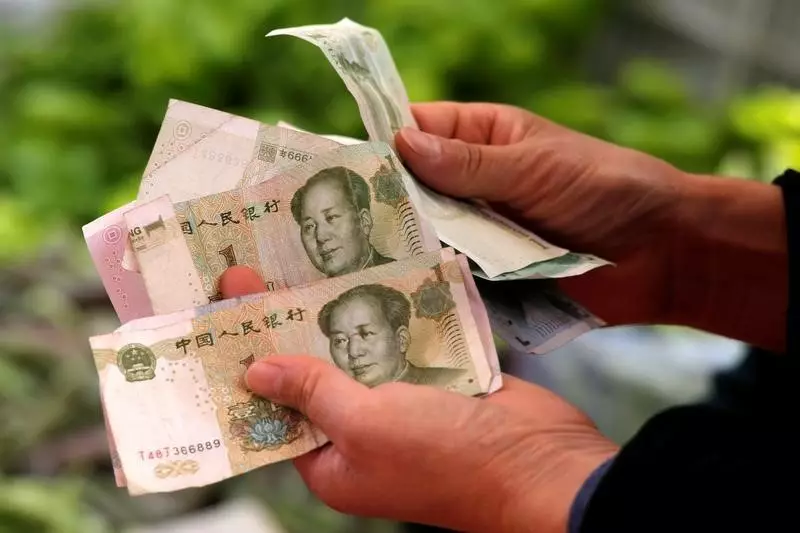In recent weeks, a cloud of uncertainty has enveloped the Asian currency markets as investors grapple with the far-reaching implications of emerging U.S. export restrictions targeting China’s semiconductor sector. The fallout from these restrictions has led to significant fluctuations in various Asian currencies, underscoring the interconnectedness of global economies and the fragile nature of investor sentiment. Particularly affected is the Chinese yuan, which has plummeted to a one-year low, signaling deeper concerns regarding China’s technological aspirations and its ability to navigate escalating tensions with the United States.
The announcement of new export controls marks the U.S. government’s third significant intervention aimed at stifling Beijing’s access to advanced technologies crucial for the development of artificial intelligence and other high-tech applications. By targeting around 140 entities directly involved in the semiconductor supply chain, these measures reflect a stark strategic agenda to curb China’s growing influence in critical technological sectors. As reactions ripple across the markets, it is evident that investors are bracing for potential cascading effects on China’s economy and its currency stability.
The timing of these restrictions also coincides with heightened geopolitical tensions, where the specter of retaliatory measures from China is looming large. With regional currencies responding to these developments, the stakes continue to rise, pushing investors to reevaluate their positions and strategies.
The result of these new policies has manifested starkly in the performance of the Chinese yuan. The yuan’s slump against the U.S. dollar, notably with the USD/CNY rate climbing to its peak since mid-November, illustrates a pivotal moment for China’s economic maneuverability. This depreciation reflects not only the immediate market reactions but also deep-rooted fears about long-term competitiveness in a global landscape increasingly dominated by technological advancements.
Moreover, the emotional responses from regional players cannot be overlooked; currencies heavily influenced by China’s economic performance, such as the Australian dollar, are also feeling the pinch. The Australian dollar, particularly sensitive to flows of trade between Australia and China, has weakened considerably, signaling investor wariness as they await upcoming economic data from Australia.
The broader economic context in the United States adds another layer of complexity for Asian currencies. Following the rise of the dollar over eight consecutive weeks, expectations for a tempered monetary policy, especially under an administration that promises to address inflation aggressively, have bolstered the greenback. With President-elect Donald Trump’s threats of imposing tariffs on various nations, including those from BRICS, it is evident that the trajectory for U.S. trade policies will be influential. Such measures are perceived as potential roadblocks for emerging markets, further exacerbating the volatility in currency exchange rates.
While the U.S. Dollar Index has seen modest gains, the intricacies of each individual currency’s response reveal a table of intricate interdependencies. The South Korean won, for instance, remained stable despite the fluctuations, indicating that local factors also weigh heavily on currency dynamics.
As countries like the Philippines revise their economic forecasts in light of ongoing uncertainties, lowered growth projections serve as a reminder that geopolitical challenges have real-world economic consequences. The adjustment of growth targets reflects a broader understanding of the requirements for resilience amidst shockwaves generated by external pressures. The Philippine peso’s stability in the wake of these changes juxtaposes broader volatility across the region, highlighting the need for adaptive fiscal and monetary policies.
The road ahead for Asian currencies remains fraught with challenges as geopolitical and economic tides shift. Currency investors will undoubtedly weigh the ramifications of U.S. policies against their regional counterparts, leading to continued market delicacy. In this landscape, monitoring developments related to the semiconductor sector and U.S.-China relations will be vital in predicting future currency behaviors and investor strategies.
Ultimately, the current landscape encapsulates the essence of global interdependence—where decisions made in one part of the world reverberate through economies and currencies thousands of miles away, shaping the financial narratives of nations amidst an era of transformation and uncertainty.

